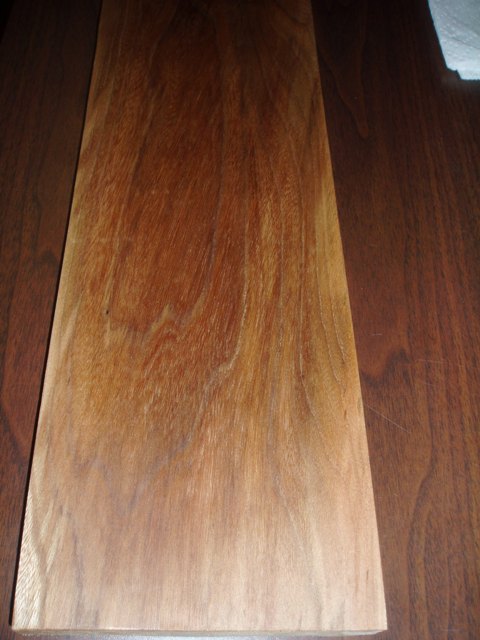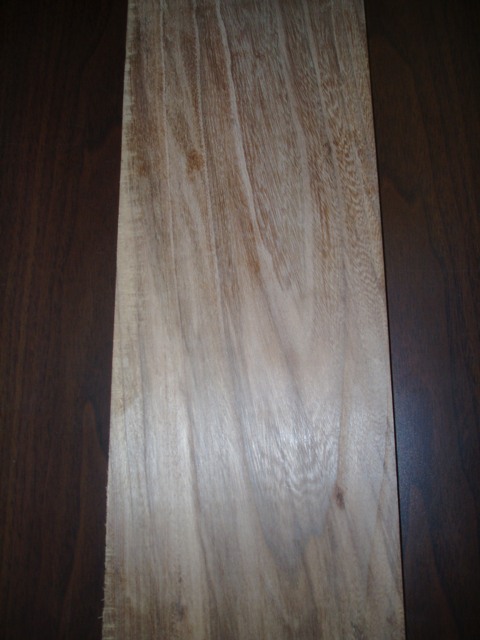Wood I.D. Puzzle
Another guessing game about wood species — this time, a hurricane-downed log from south Texas. April 18, 2009
Question
Hurricane Rita (2005) left me with quite a bit of wood. The pictures below are some board from a yard tree that was given to me. When I got the tree, it was only a trunk and the owner deliverer had no idea what it was. It had a foul odor when sawed, like sour mud. The grain is porous, and resembles mahogany more than anything else I've ever seen. Does anyone have any idea what it could be? I live in SE Texas, but the tree is not necessarily native, since it was in a yard.

Click here for higher quality, full size image
Here's another pic.

Click here for higher quality, full size image
Forum Responses
(Sawing and Drying Forum)
From Gene Wengert, forum technical advisor:
The sour smell is surely an anaerobic bacterial infection, which is common in yard trees.
From the original questioner:
Gene - any thoughts on what the wood might be by the pics?
From contributor R:
Chinaberry.
From the original questioner:
I considered that, but I cut some Chinaberry this summer and the color was quite a bit different, lighter with more pronounced color between summer and winter wood. I was thinking maybe Sassafras or Catalpa. The bark of this tree was furrowed with a pattern similar to black walnut. Here is a pic of it straight out of the planer - before sanding. Any thoughts?

Click here for higher quality, full size image
From contributor C:
I turned some catalpa a couple weeks ago, and while it has a distinctive smell, if this log was infected, odor alone would not be a good way to identify it as catalpa. Catalpa carves very nicely - how readily can you machine that sample?
From contributor W:
My first thought was mulberry. Your wood is a ring porous hardwood. Is the wood relatively hard and heavy?
From contributor C:
I have sawed and turned red mulberry - the wood tends to be more yellow and the sawdust is bright yellow. The contrast between the sapwood and heartwood is very dramatic.
From contributor W:
You are right. I am leaning now more to elm, maybe slippery elm. Elm has wavy bands in the latewood (pores are arranged in distinct wavy bands that give elm its signature grain). I see a little bit of that in the grain.
If it was honey locust, another possibility, the bark should have keyed you. Sometimes there are thorns growing right out of the bark. Where I am at, honey locust bark is not deeply furrowed like walnut. I thought it might be one of the locusts, black or honey at first.
From contributor R:
If my eyes aren't playing tricks on me I see green, yellow and blue hues in the first picture. The hues combined with the small amount of sapwood in the lower left corner and the grain pattern I would lean more towards chinaberry. But as has been stated it could be sassafras or elm. It could even be brown ash.
From Gene Wengert, forum technical advisor:
My guess is Marshall Seedless ash, common yard tree.
From the original questioner:
Hey Doc, how do I go about sending off a sample for positive identification: size of sample required, address, shipping method, etc?
From contributor L:
Black willow maybe?
From the original questioner:
I finally figured it out - American elm. I had a couple of logs given to me a while back that still had leaves on them which allowed me to identify them. Once I started cutting, the color, grain, and the smell was exactly the same as the boards posted above. Thanks for everyone's input.


